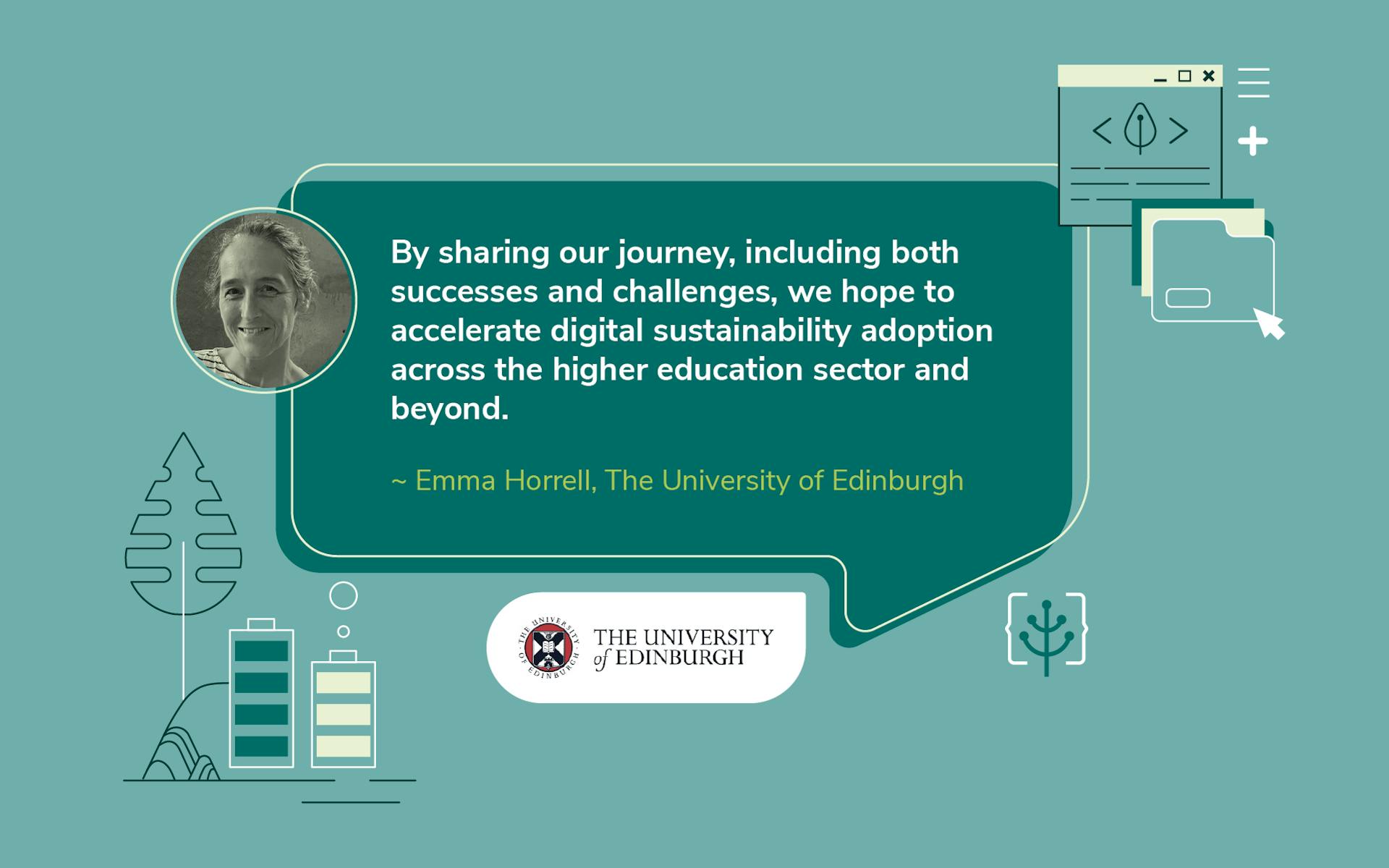Emma is the User Experience Manager at the university. In her work, she aims to reduce the carbon footprint of the university's digital estate through measurement approaches, content optimization, and behavioral change initiatives.
Can you tell us about the University of Edinburgh?
The University of Edinburgh is a public research university founded in 1583, making it one of Scotland's four ancient universities and the sixth-oldest university in continuous operation in the English-speaking world.
With almost 50,000 students across five campuses, the university is consistently ranked within the world's top 40 universities by major global rankings (ARWU, THE, and QS). We are proud of our commitment to academic standards and our growing leadership in sustainability innovation.
How does sustainability manifest in your organization?
We have set an ambitious target of achieving net-zero emissions by 2040. While initial efforts focused on physical infrastructure, we recognize the growing importance of addressing our digital carbon footprint.
We began this journey by investigating methods for measuring website weight and carbon emissions. Rather than waiting for a perfect strategy, we've adopted a "learning by doing" approach. Our digital estate comprises numerous individual websites, each managed by different teams responsible for content creation, updates, and promotion.
A standout success was our homepage image optimization project. We discovered our image formats were unnecessarily heavy, and through simple changes, achieved 13 tonnes of CO2 reduction per year.
Our strategy is to identify areas for improvement and document our findings through case study blog posts that others can learn from.
Why did you join the GSF?
Digital sustainability is a relatively new area for us. We faced uncertainty about whether our approaches were correct, which experts to engage, and where to find guidance. The GSF provides the expertise and community we needed.
Through our involvement with the Web Sustainability Guidelines by W3C, we came across some of the GSF's crucial work, particularly the Software Carbon Intensity (SCI) standard, which is essential for accurately measuring environmental impact. This framework offers exactly what we need: a systematic way to measure environmental impact and understand the scale of our challenge.
The GSF's diverse membership, including nonprofits and universities facing similar challenges, creates invaluable knowledge-sharing opportunities. Rather than working in isolation, we can learn from and contribute to a community of practitioners working in the same emerging field.
Are there any other sustainability initiatives that you can share?
While our IT professional services team focuses on practical implementation, the university has broader sustainability initiatives across different departments.
For instance, the Software Sustainability Institute (SSI), led by EPCC in partnership with the Universities of Manchester and Southampton, recently secured £10.2m funding to focus on the environmental sustainability of research software.
In its next phase, the project will investigate improving equality, diversity, and inclusion while addressing the rising interest in artificial intelligence and machine learning.
How do you hope to contribute to and benefit from the GSF?
As a GSF member, we bring practical insights from two years of ground-level implementation. Our case studies demonstrate how to shift from a "create more content" culture to one valuing purposeful, sustainable digital practices.
We've documented tangible actions others can apply immediately—from measuring website emissions to optimizing content delivery. Our biggest lesson: sustainable digital transformation is fundamentally about behavioral change, not just technical solutions. When colleagues understand that unused content with heavy PDFs and videos has a real environmental impact, they make more thoughtful decisions about what they create and maintain.
From the GSF, we seek expertise in measurement methodologies and connections with institutions facing similar challenges. Looking ahead, we’re particularly interested in the SCI for Web specification and developing frameworks for sustainable software procurement.
We envision our collaboration as an opportunity to accelerate digital sustainability adoption across sectors while demonstrating that environmental responsibility and digital innovation are complementary.
This article is licenced under Creative Commons (CC BY 4.0)
